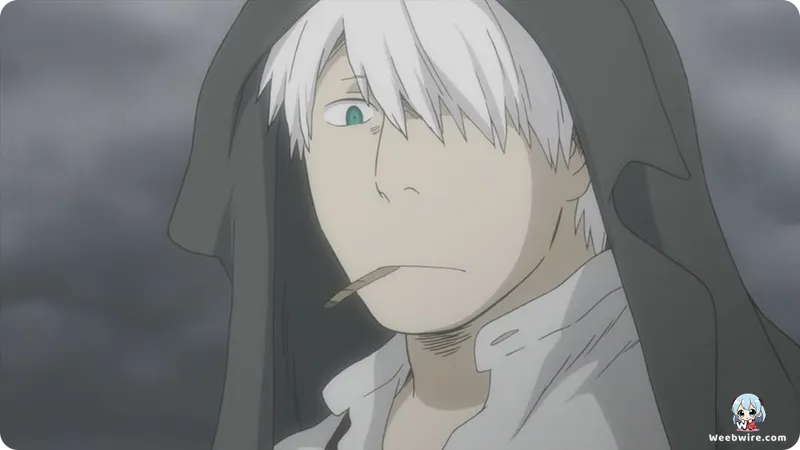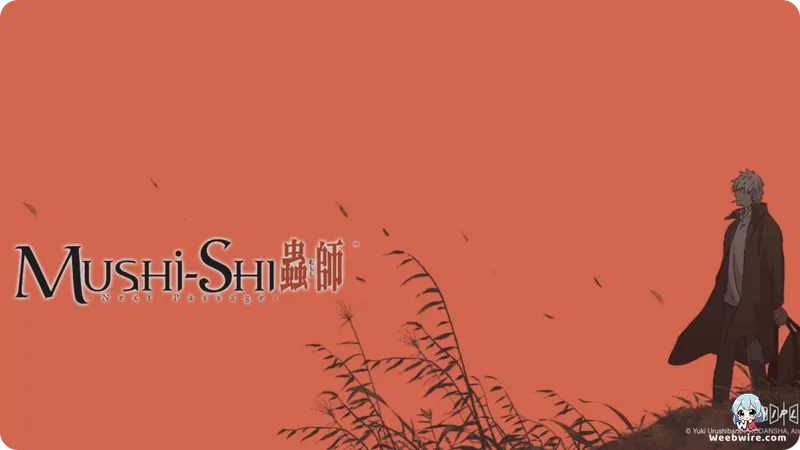Unveiling the Quiet Genius: Essential Insights into MUSHI-SHI The Next Passage

In the bustling realm of anime, certain series emerge not with a roar, but with a captivating whisper, drawing audiences into profound introspection and an unparalleled appreciation for the natural world. Among these revered titles, MUSHI-SHI The Next Passage stands as a testament to quiet brilliance, a critically acclaimed masterpiece that, even for its most ardent followers, harbors a wealth of fascinating, lesser-known details. Diverging sharply from typical action-fantasy narratives, Mushi-Shi invites viewers into a meticulously crafted universe where unique life forms known as 'Mushi' coexist with humanity, often instigating enigmatic and sometimes perilous phenomena. It is the solemn duty of Ginko, the enigmatic Mushi Master, to journey across the land, observing these occurrences and gently guiding humans through their intricate relationship with the unseen.
The Enigmatic Mushi and Ginko's Role
At the heart of the Mushi-Shi franchise lies the extraordinary concept of the Mushi themselves. Creator Yuki Urushibara deliberately eschewed conventional categorizations, envisioning them as primal life forms, akin to bacteria or fungi, existing on an entirely different plane of perception. This ingenious approach allows the series to explore profound themes of ecology, symbiotic existence, and the delicate balance of nature without resorting to simplistic good-versus-evil tropes. Ginko, as a Mushishi, does not engage in combat; rather, he dedicates himself to understanding their behaviors and striving to restore harmony when interactions with humankind lead to imbalance. His role is uniquely positioned as a traveling physician or a dedicated natural historian.
Visuals and Sound: A Masterclass in Subtlety
The visual artistry by Studio Artland is rich with compelling insights. Celebrated for its unwavering commitment to detail, the studio faithfully translated Urushibara’s distinctive visual lexicon. The animation prioritizes lush, expansive natural landscapes, rendered with breathtaking realism, anchoring the fantastical elements. Instead of high-octane action, animators focused on subtle nuances: the rustling of leaves, the serene flow of water, and quiet, profound expressions. This profound dedication to depicting nature as a vibrant, sentient entity underscores Artland's devotion. The deliberate pacing, often described as slow, is a deliberate artistic choice, enabling viewers to fully absorb the intricate beauty and philosophical depth within each self-contained narrative.

Beyond the visuals, Mushi-Shi's sound design is a masterclass in subtlety and immersive storytelling. The score, composed by Toshio Masuda, embraces minimalism, employing traditional Japanese instruments and evocative ambient sounds to conjure an ancient sense of mystery and natural serenity. The soundscape is populated by the delicate chirping of insects, the gentle whisper of the wind, and the tranquil lapping of water, rendering the unseen presence of Mushi almost tangibly palpable. This expert crafting of audio elements profoundly enhances the psychological depth of the series, drawing audiences deeper into Ginko's world.
Ginko's Unique Characteristics
Intriguing facts also surround Ginko himself. His striking white hair and single green eye are consequences of a powerful Mushi encounter in his youth. This incident not only granted him the extraordinary ability to perceive Mushi clearly but also rendered him a constant magnet for their presence, explaining his nomadic existence. His ever-present kiseru, a traditional Japanese pipe, frequently contains a special blend of herbs capable of warding off weaker Mushi or aiding his detection of their proximity, serving as both a practical tool and a personal defense mechanism. This profound layering of character detail enriches his seemingly detached persona.
Episodic Structure and Lasting Legacy
The episodic structure of MUSHI-SHI The Next Passage further distinguishes it. Unlike many anime relying on overarching plotlines, Mushi-Shi unfolds like a curated collection of exquisitely crafted folktales. Each episode introduces a fresh Mushi-related dilemma, facilitating focused exploration of diverse human conditions and environmental interactions. This format thoughtfully echoes the traditional Japanese 'kidan,' offering a refreshing perspective and ensuring consistent storytelling quality as each vignette develops its own emotional resonance and philosophical inquiry.
The original manga, concluding in 2008, garnered significant critical accolades, including an Excellence Prize at the 2003 Japan Media Arts Festival and the 2006 Kodansha Manga Award. The anime adaptations, especially The Next Passage, were praised for unwavering fidelity to Urushibara's original vision—a commendable achievement. This steadfast commitment to artistic integrity is a testament to the production committee's deep understanding. The series persists as a quiet cultural phenomenon, a gentle yet potent reminder that profound stories are conveyed not with fanfare, but with a subtle whisper, inviting us to look closer at the world and the unseen forces that shape our existence. Its enduring appeal lies in its capacity to inspire contemplation and foster a deeper appreciation for the delicate balance of life, firmly establishing it as a cornerstone of thoughtful anime.
Credits
MUSHI-SHI The Next Passage
Author
Yuki Urushibara
Cover Art
Yuki Urushibara
Studio
Artland
Publisher
Kodansha
Producers





